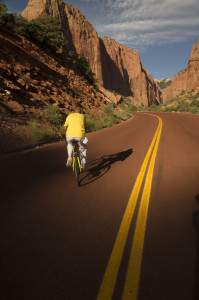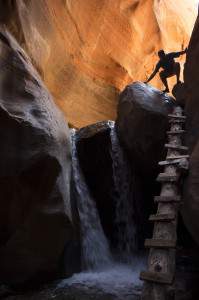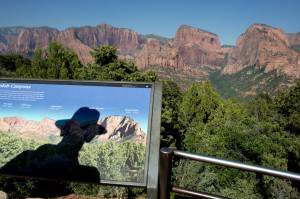 On Assignment. What a glamorous phrase. Before I became a professional photographer I would dream of being “on assignment” traveling the world, spending weeks in exotic locations making great photographs.
On Assignment. What a glamorous phrase. Before I became a professional photographer I would dream of being “on assignment” traveling the world, spending weeks in exotic locations making great photographs.
What a wonderful way to make a living.
And I guess it was – but nothing is what it seems. With that glamour comes heavy responsibility and there have been many times when I would happily have been in a place for myself rather than a client.
My first real assignment was to cover the 1975 British Everest Expedition for the London Daily Mail. I wasn’t a full time professional photographer back then but I was a climber and a friend of most of the expedition members giving me an inside track on the story. It looked as though this would be the first British ascent of Everest – Ed Hillary was a Kiwi so he didn’t count – and the Southwest Face was one of the most difficult Himalayan routes to be attempted, so the eyes of Britain were focused on this epic adventure.
 I had never worked for a major national newspaper and didn’t understand the speed with which I had to get material back to Fleet Street. This was in the days before the Internet and cell phones. The only way to transmit photographs was by cable and the Daily Mail had set up an account in my name.
I had never worked for a major national newspaper and didn’t understand the speed with which I had to get material back to Fleet Street. This was in the days before the Internet and cell phones. The only way to transmit photographs was by cable and the Daily Mail had set up an account in my name.
The big problem was that the nearest Telex office was in Delhi. I was in a remote area of Nepal, a good weeks fast walk to the closest grass airstrip.
Just being in this area was a dream come true and I wanted to savor it. In those days few people made the trek to Everest and it was still an adventure but I had to get my film back. It looked as though I would have to give up any idea of spending time on the mountain and hand carry the precious film back to Delhi for processing and transmission. I was beside myself with frustration. It was the trip of a lifetime and I would have to miss most of it. The film was too important to risk sending it with someone I didn’t know.
Here I was living my dream of being a globe trotting professional and all I wanted to do was hang out on Everest with a bunch of friends. The result of a tragic accident solved the problem for me. Mick Burke, a BBC cameraman, disappeared on a summit attempt and the expedition liaison officer had to return immediately to Kathmandu. He took my film with him. It certainly wasn’t the solution I would have wished for. Mick was a friend and his wife had given me a box of his favorite cigars to take to him. He never got them.
 I had learned a valuable lesson. Being “on assignment” carries responsibilities. The client is risking a significant amount of money sending you out to get the story. Apart from International airfares, hotels, meals there was film and processing and hopefully a day rate. If you want to stay in the business you have to deliver the goods time and time again. Failure is not an option.
I had learned a valuable lesson. Being “on assignment” carries responsibilities. The client is risking a significant amount of money sending you out to get the story. Apart from International airfares, hotels, meals there was film and processing and hopefully a day rate. If you want to stay in the business you have to deliver the goods time and time again. Failure is not an option.
Several years after my Everest adventure, Nepal was the scene of yet another nail biter. National Geographic Magazine had sent me out to a very remote area of West Nepal to cover the work of a snow leopard researcher. I had a letter of assignment on Geographic letterhead – “Robert Holmes is on assignment for National Geographic Magazine please extend all courtesies.”
I arrived at Tribhuvan International Airport in Kathmandu with several cases of equipment and a case stuffed with 300 rolls of Kodachrome. I was spending 3 months in the country.
 I tried to casually walk through customs but the customs officer looked over my mountain of equipment and asked to check just one bag, the one with all my film. I confidently produced my letter of assignment and expected to be waived through. No such luck. He told me I could only take 10 rolls of film into the country together with one camera. Those were the rules and he couldn’t change them. Maybe a financial incentive would have helped bend those rules but I was too naive to think of that at the time. They gave me a receipt and said I could pick up everything on my way back home. Now Kathmandu airport is not exactly the best organized operation in Asia and I had little confidence in ever seeing these cases again.
I tried to casually walk through customs but the customs officer looked over my mountain of equipment and asked to check just one bag, the one with all my film. I confidently produced my letter of assignment and expected to be waived through. No such luck. He told me I could only take 10 rolls of film into the country together with one camera. Those were the rules and he couldn’t change them. Maybe a financial incentive would have helped bend those rules but I was too naive to think of that at the time. They gave me a receipt and said I could pick up everything on my way back home. Now Kathmandu airport is not exactly the best organized operation in Asia and I had little confidence in ever seeing these cases again.
I spent an agonizing week immersed in bureaucracy of the most advanced level culminating in a personal meeting with the British educated Minister of Tourism. He said I could bring everything in but every roll of film and every camera body must be accounted for when I left Nepal. So far so good. I returned to the airport clutching my letter from the Minister. I was lead to the bonded warehouse and looked in dismay at the chaos in front of me. Several hundred rolls of toilet paper cascaded across the floor. It was total disorder.
Miraculously there were my cases were not far from the entrance. The customs officer asked me how many rolls of film were there, I counted the top layer and this number was duly entered into my passport. He similarly entered the serial numbers of my cameras but showed zero interest in the lenses, which had four times the value of the cameras.
 Over a 35-year career I have managed to produce the goods without screwing up – at least not to the knowledge of my clients – and I still get an adrenalin rush setting out for a new destination whether it’s in North America or a remote corner of Asia. Every place has its own challenges and I enjoy the process of overcoming them. This is something I find particularly satisfying as a teacher. It’s always my goal that every workshop / photo-tour participant returns with photographs better than they have ever taken before and that in turn pushes me to make sure that it happens.
Over a 35-year career I have managed to produce the goods without screwing up – at least not to the knowledge of my clients – and I still get an adrenalin rush setting out for a new destination whether it’s in North America or a remote corner of Asia. Every place has its own challenges and I enjoy the process of overcoming them. This is something I find particularly satisfying as a teacher. It’s always my goal that every workshop / photo-tour participant returns with photographs better than they have ever taken before and that in turn pushes me to make sure that it happens.
A photo-tour is the perfect way for someone to fully experience a life “on assignment” without the burden of responsibility, feeling you have to produce. That freedom often generates some of the best photographs.
